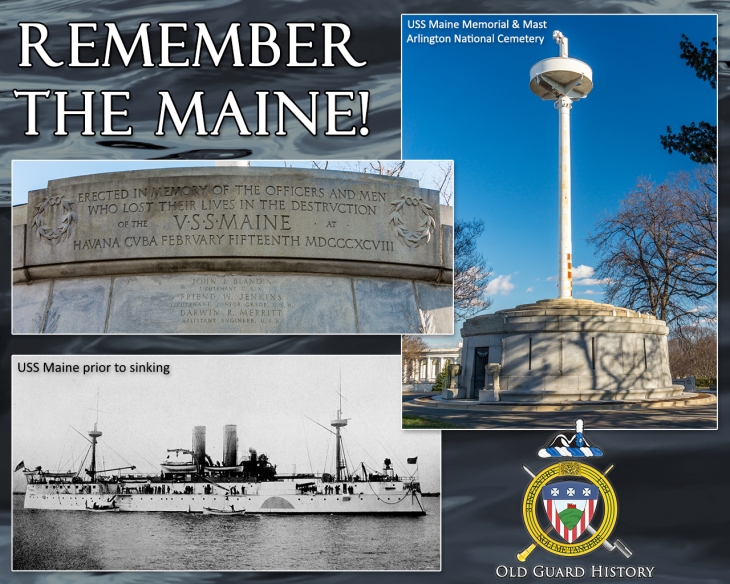
On February 15, 1898, the U.S.S. Maine was docked in Havana Bay, Cuba. It was to serve as an American presence during the Cuban War for Independence. Later that night, an explosion rocked the ship, killing 266 members of the crew. The explosion, still not solved to this day, launched the United States into the War with Spain. Many believed the Spanish were behind the explosion. It resulted in a declaration of war against Spain on April 25.
The War with Spain sent American troops to the Spanish territories of Cuba, the Philippines, Guam and Puerto Rico. Soldiers of the Old Guard departed Ft. Snelling, MN by train and arrived in Mobile, AL en route to Cuba by Army transport ships. In July 1898, the Regiment played a significant part in the Santiago Campaign, enduring tropical heat in woolen uniforms while storming a fortified blockhouse at El Caney that controlled a part of the city’s water supply, followed by three days of more or less continuous shelling in trenches before the city until a ceasefire was signed. The war lasted only ten weeks, with a signed peace agreement in August 1898.
Several years later, Congress made arrangements to raise the Maine and inter the remaining dead at Arlington National Cemetery. The memorial, which also serves as the final resting place for 165 members of the crew, incorporated the recovered main mast of the Maine. In 1915, President Woodrow Wilson was on hand to dedicate the U.S.S. Maine Mast and Memorial. Currently, the mast and memorial is undergoing restoration to its 1915 appearance.



